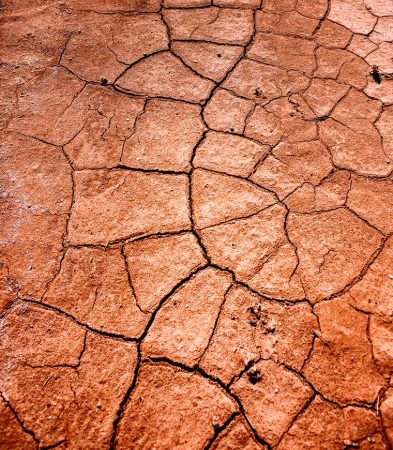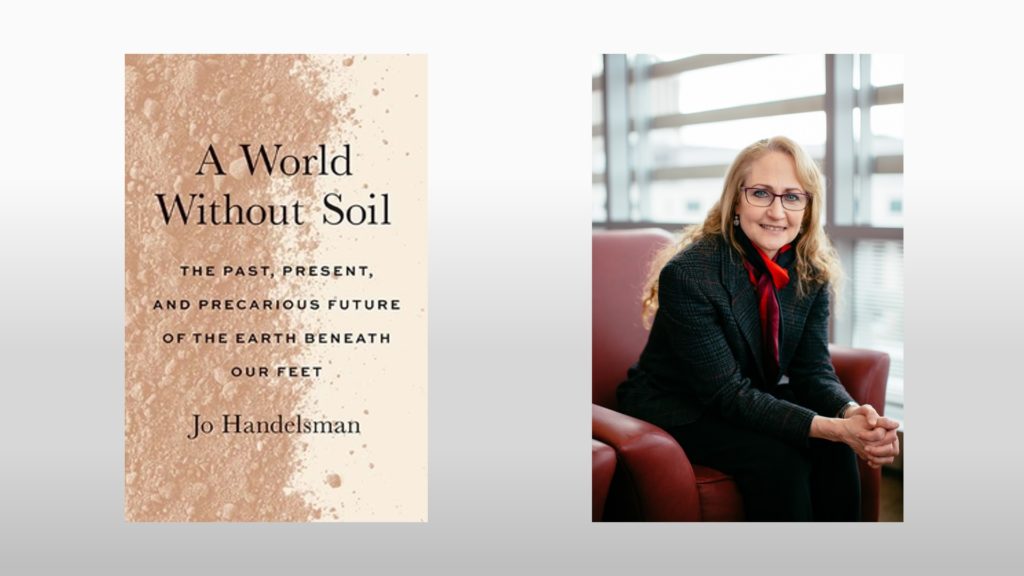Book Review: A World Without Soil
A review of: A World Without Soil: The past, present, and precarious future of the earth beneath our feet
by Jo Handelsman, 2021, Yale University Press
This book is a good, clearly written, popular introduction to how quickly we are losing the topsoil that feeds us, and how politicians treat soil like dirt. The author, a plant pathologist, is Director of the Wisconsin Institute for Discovery at University of Wisconsin–Madison, and was Associate Director for Science at the White House Office of Science and Technology Policy (OSTP) to President Obama.
 She focuses on contemporary soil issues, primarily reducing erosion and the need to increase soil organic carbon to retain water and nutrients for farming in a warming world. The emphasis is on methods like contour ploughing, cover crops, improved plant selection, breeding, or genetic engineering, shelter belts along waterways to reduce soil carbon erosion, loss of fertilizer nutrients, and marine dead zones. Biochar is mentioned briefly, mostly in the original Amazonian and Mayan Indigenous contexts, but much more could have been said about its modern applications for increasing soil carbon, soil water and nutrient retention, and increasing plant production and biomass in sustainable agriculture.
She focuses on contemporary soil issues, primarily reducing erosion and the need to increase soil organic carbon to retain water and nutrients for farming in a warming world. The emphasis is on methods like contour ploughing, cover crops, improved plant selection, breeding, or genetic engineering, shelter belts along waterways to reduce soil carbon erosion, loss of fertilizer nutrients, and marine dead zones. Biochar is mentioned briefly, mostly in the original Amazonian and Mayan Indigenous contexts, but much more could have been said about its modern applications for increasing soil carbon, soil water and nutrient retention, and increasing plant production and biomass in sustainable agriculture.
The book under-emphasizes the importance of balanced soil minerals from rock sources to optimize production. Except for carbon, hydrogen, nitrogen, and oxygen, all the 20 odd essential elements come from the rocks below. Botanists and microbiologists take top-down views and propose that better plant stocks by genetic selection or genetic engineering, mulching, or microbial inoculation are sufficient. They may pay insufficient heed to the bottom-up view that soil mineral balance is essential for higher productivity and biodiversity. Both top-down and bottom-up approaches are clearly needed. For this reviewer, the book’s major omission is lack of reference to remineralization with rock powders as natural slow-release fertilizers to regenerate landscapes for decades and increase biomass and soil carbon, as well as being a significant carbon sink by itself.
This book provides important insight into the marginalized politics of soil, beneath the vision of politicians. As Presidential Science Advisor the author researched soil erosion issues, and was shocked to discover many of the most productive US soils had already been lost forever, and many more imminently poised to follow. Her efforts to act on those findings are profoundly revealing, in her own words:
Jo Handelsman, Associate Director for Science, White House Office of Science and Technology Policy (OSTP) delivers remarks during the MissionSTEM Summit 2016, Monday, Aug. 8, 2016 at NASA Headquarters in Washington. Photo Credit: (NASA/Bill Ingalls)
“I was appalled by what I discovered in published research on soil erosion. And what I learned in conversation with renowned soil scientists not only confirmed my fears but warned me that the reality was even worse than many studies suggested. Using USDA data my staff and I made projections that showed how dire the situation was: large tracts of midwestern farmland could be devoid of any topsoil within the century. When we accounted for the increases in heavy precipitation predicted by climate change models, the rate of soil erosion accelerated considerably. Iowa State University agronomist Rick Cruise shared with us an aerial photograph showing many spots where the topsoil was gone, baring the subsoil to the elements.
For months, I rechecked my calculations, verified the data, read further scientific studies, and consulted more experts. Only when I was steeped in the science did I accept that the word “dire” was not hyperbole. This soil erosion trend could reduce America’s abundant food production in a matter of decades, and similar rapid soil loss in India, China, and Africa could spark an international food crisis.
As I paced my office, dismayed by my former ignorance, I considered what to do. I had to tell the President. How could I be a responsible advisor and keep this catastrophe from him? Saving America’s soil could be a legacy of the Obama Administration.
Any process to inform the President begins with a memo. Most of my prior memos had reached him, and some had been followed up with a meeting in the Oval Office to consider the next steps, so I felt optimistic that this memo would be received by President Obama, discussed, and result in a Presidential initiative on soil preservation. But after waiting over a year, I was finally told that it was simply too late in the presidential term to start another major initiative. It remains my biggest regret that I was never able to get that memo to him, but I can still take action by writing this book to inform people around the world about the crisis.”
Jo Handelsman
The most shocking revelation of this book is that it is clear her urgent memo was internally blocked for more than a year from being passed up the information chain to the decision makers! She loyally mentions no names, but her superiors at OSTP or White House Staff must have thought that soil was an unimportant or politically irrelevant issue! This is an appalling indictment of how top political advisors discount humanity’s crucial long-term issues like agricultural sustainability and reversing global climate change.
Break
Dr. Thomas J. F. Goreau is President of the Global Coral Reef Alliance, a non-profit organization for coral reef protection and sustainable management, and Coordinator of the United Nations Commission on Sustainable Development Partnership in New Technologies for Small Island Developing States. He works with tropical fishing communities and organizations around the world to restore their coral reefs and fisheries. He is also a trained nuisance crocodile remover who would rather not. Dr. Goreau is the researcher for Remineralize the Earth’s New Harmony Farm CSA Research Project. He is working to determine optimal ratios of rock dust, biochar and compost for use in agriculture, to create foods with high nutrient density and maximum carbon sequestration. He did a significant study on remineralization showing more than eight times the biomass for trees grown in Panama with basalt rock dust over a five-year period, and showing increases in major macro and mico-nutrients. He is the main editor and co-author of Geotherapy: Innovative Methods of Soil Fertility Restoration, Carbon Sequestration, and Reversing CO2 Increase, a technical book on remineralization and biochar, to be published in 2014 by CRC Press.
Support us on Patreon
Thank you for joining us today! Please become a member of RTE and support us on Patreon. Unlike many larger organizations, we work with a team of determined and passionate volunteers to get our message out. We aim to continue to increase the awareness of remineralization to initiate projects across the globe that remineralize soils, grow nutrient dense food, regenerate our forests’ and stabilize the climate – with your help! If you can, please support us on a monthly basis from just $2, rest assured that you are making a big impact every single month in support of our mission. Thank you!









Seth Itzkan
February 15, 2022 (11:37 am)
Great review. Thanks.